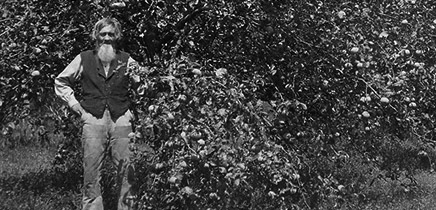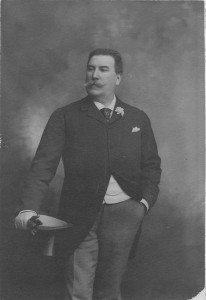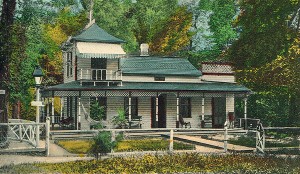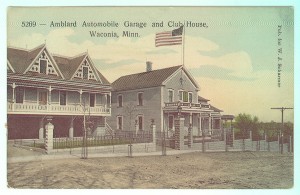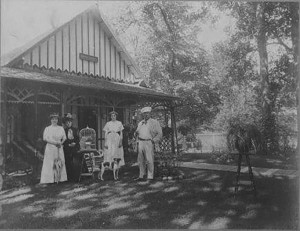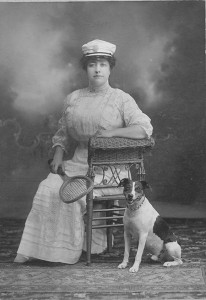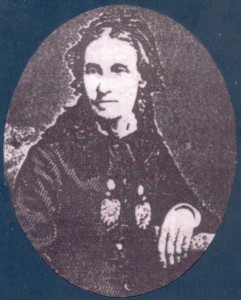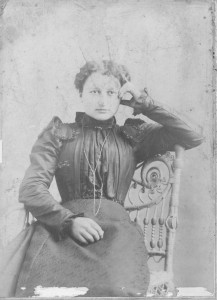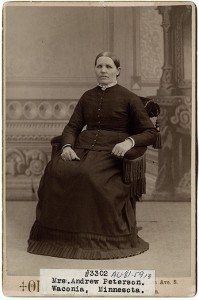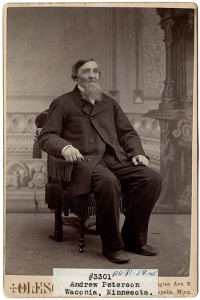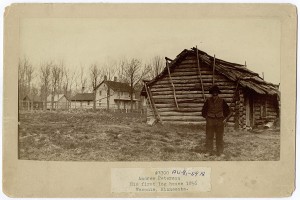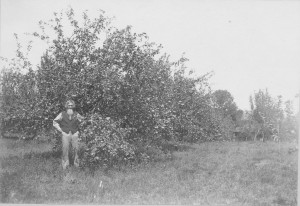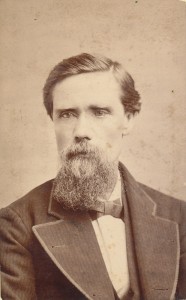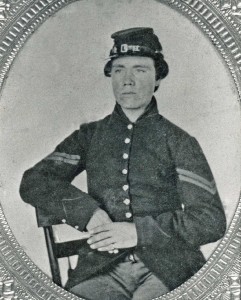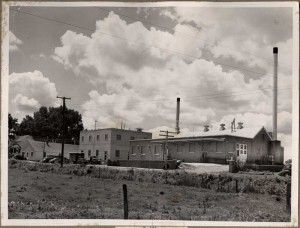Jonathan Carver was an explorer, mapmaker, author, and subject of controversy. He was among the first white men to explore and map areas of Minnesota, and including what later became Carver County. While French explorers had been in the area earlier, they did not leave behind detailed maps or journals of their travels as Carver did.
Jonathan Carver was born in Weymouth, Massachusetts on April 13, 1710, when Massachusetts was still part of the British Empire. Carver’s father, Ensign David Carver (an honorary not military rank), a prominent public figure, held many offices such as constable and selectman (chief administrative officer). He also owned property, including a gristmill. The Carvers moved to Canterbury, Connecticut when Jonathan was still a boy, where his father again held public office. Ensign David Carver died when Jonathan was seventeen.
Jonathan Carver grew to an adult in Canterbury, marrying Abigail Robbins in 1746. They had a daughter in 1747 and another in 1748. The family then settled in Montague, Massachusetts where another five children were born. He became town selectman in Montague, before entering the Massachusetts militia in 1755. By 1763, the end of the French and Indian War, Carver had become a Captain with his own company of militiamen.
When the war ended, Carver still wanted to be of service. He signed on as third in command of an expedition to discover a Northwest Passage to the Pacific Ocean. He believed expedition organizers Robert Rogers and Captain James Tute had approval from the British Crown, with payment promised through the British treasury. This later proved false.
The crew left from Boston on May 20, 1766, with Carver as draftsman and mapmaker. They were bound for Fort Michilimackinac in the Great Lakes region. Carver kept detailed journal accounts of the expedition. By December 7, 1766, they reached the Minnesota River. There, Carver befriended a band of Dakota, whom he calls “Naudowessies” in his journal. They allowed him to winter with them, and he spent time observing and recording their customs and celebrations in his journals. This would become the focal point of his writing.
Spring 1767 saw a return east to Prairie du Chien to rejoin the main expedition. Lack of provisions forced a return to Fort Michilimackinac for winter. While there, Rogers was arrested for treason and the expedition disbanded. Carver’s remaining time was spent compiling his journals, before returning home in spring 1768.
After failing to find funding in Massachusetts to publish his journals, Carver headed to England to try to raise money in February 1769. Carver was fifty-nine, and he left his wife and seven children behind, never to see them again. Carver married a Mary Harris in London, having two more children. He repeatedly petitioned the Crown for payment for the failed expedition. He was always denied, since the government had not authorized the trip.
After nine hard years of struggle, Carver worked with Alexander Bicknell, who was never credited, to add some excitement to the journals. They were published in 1778 as Travels Through the Interior Parts of North America: 1766, 1767, 1768. They received wide praise and popularity. Success came too late, however. Jonathan Carver died in poverty on January 31, 1780.
By 1844, Travels to the Interior had greatly declined in popularity and respect. Many historians claimed the whole book was made up, written entirely while Carver was in London.
It wasn’t until discovery in 1909 of a 1767 letter from Carver to his first wife from Fort Michilimackinac printed in a 1768 edition of the Boston Chronicle that many believed the book was true. This letter contained many of the details in the book, as did his original journals, which were discovered the same year.
Also controversial was a claim from the third edition of the book. It said two Dakota had granted Carver a large tract of land, estimated around 12,000 miles, for resolving a dispute between them and a neighboring group. It has never been confirmed by other sources, however, despite later claims by Carver’s descendents.
In 1854, former Territorial Governor Alexander Ramsey suggested the name Carver for a town located along the Minnesota River, and a nearby creek, in honor of his travels in the area. In March 1855, the surrounding county was also named for him.
Turning Point: Jonanthan Carver explored the area that would become Carver County in 1766-1767, creating detailed maps and accounts of the land and American Indians still used in the twenty-first century.
Chronology:
- April 13, 1710: Jonathan Carver born in Weymouth, Massachusetts.
- 1715-1725: The Carver family moves to Canterbury, Connecticut.
- 1746: Carver marries Abigail Robbins.
- 1747: His first daughter is born.
- 1748: His second daughter is born.
- 1749/1750: Jonathan Carver and his family settle in Montague, Massachusetts.
- 1755: Carver joins Massachusetts militiamen.
- 1763: French and Indian war ends; Carver leaves militia with rank of Captain.
- 1766: Carver joins expedition to explore interior of America and find Northwest Passage.
- May 20, 1766: The expedition departs, bound for Fort Michilimackinac.
- December 7, 1766: The expedition reaches the Minnesota River; Carver camps with a band of Dakota for the winter.
- Spring 1767: Carver rejoins main expedition at Prairie Du Chien.
- Winter 1767: The expedition returns to Fort Michilimackinac for winter. Robert Rogers is arrested and the expedition is disbanded. Carver compiles his journals.
- Spring 1768: Carver returns home to Massachusetts.
- September 12, 1768: Carver places ad in Boston Chronicle requesting funding to publish journals.
- February 1769: Carver abandons family and journeys to London in search of better success.
- 1778: His edited journals are published as Travels Through the Interior Parts of North America: 1766, 1767, 1768.
- January 31, 1780: Jonathan Carver dies in poverty in England.
- By 1844: Book is widely believed to be made up and is losing popularity and respect.
- 1854: City of Carver and Carver Creek named by Alexander Ramsey for explorer Jonathan Carver.
- 1855: Carver County named for Jonathan Carver.
- 1909: The discovery of original journals and letters proves validity of Carver’s book.
BIBLIOGRAPHY
Encyclopædia Britannica Online, s. v. “Jonathan Carver,” accessed December 31,2012. http://www.britannica.com/EBchecked/topic/97611/Jonathan-Carver.
Gelb, Norman, ed. Jonathan Carver’s Travels Through America, 1766-1768: An Eighteenth-Century Explorer’s Account of Uncharted America. New York: John Wiley & Sons, Inc., 1993.
Jonathan in Chaska website. Jonathan Carver, American Explorer. http://www.jonathaninchaska.com/index.cfm/linkservid/EE2D93A4-5056-A306-AF8BB116985CAB59/showMeta/0/
RELATED RESOURCES
Primary:
“Jonathan Carver: Proposals to the Public”. Boston Chronicle, September 12, 1768. Advertisement for funding. In Gelb, Norman, ed. Jonathan Carver’s Travels Through America, 1766-1768: An Eighteenth-Century Explorer’s Account of Uncharted America. New York: John Wiley & Sons, Inc., 1993.
Boston Chronicle, 1768. Letter from Jonathan Carver to Abigail Robbins Carver. In Gelb, Norman, ed. Jonathan Carver’s Travels Through America, 1766-1768: An Eighteenth-Century Explorer’s Account of Uncharted America. New York: John Wiley & Sons, Inc., 1993.
Secondary:
Buck, Solon J. “The Story of Grand Portage”. Minnesota History, 5 Issue 1 (February 1923):14-27. http://collections.mnhs.org/MNHistoryMagazine/articles/5/v05i01p014-027.pdf
Cuneo, John R. Robert Rogers of the Rangers. New York: Oxford University Press, 1959.
Fridley, Russell W. “An evaluation of documents useful to the Ethnohistorian: the papers of Jonathan Carver”. Proceedings of the Minnesota Academy of Science, 1955, Vol. 23: 9-14.
Fridley, Russell W. “The Writings of Jonathan Carver”. Minnesota History, 34 Issue 4 (Winter 1954):154-159. http://collections.mnhs.org/MNHistoryMagazine/articles/34/v34i04p154-159.pdf
Goddard, James Stanley and John Parker, eds. The Journals of Jonathan Carver and Related Documents, 1766-1770. St. Paul: Minnesota Historical Society Press, 1976.
Holmes, Oliver W. “Book Review”. Minnesota History, 45 Issue 4 (Winter 1976): 157.
Lee, John Thomas. “A Bibliography of Carver’s Travels”. State Historical Society of Wisconsin Proceedings, 1909: 148-183.
Lee, John Thomas. “A Bibliography of Carver’s Travels”. State Historical Society of Wisconsin Proceedings, 1912: 121-123.
State Historical Society of Wisconsin, Proceedings,1909, p. 149-151; 1912, p. 107-120.
Parker, John, ed. The Journals of Jonathan Carver and Related Documents, 1766-1770. St. Paul: Minnesota Historical Society Press, June 1976.
Parker, John. The Great Lakes and the Great Rivers: Jonathan Carver’s Dream of Empire. Lansing: Historical Society of Michigan, 1965.
Smith, G. Hubert. “Carver’s Old Fortifications”. Minnesota History, 16 Issue 2 (June 1935): 152-165. http://collections.mnhs.org/MNHistoryMagazine/articles/16/v16i02p152-165.pdf
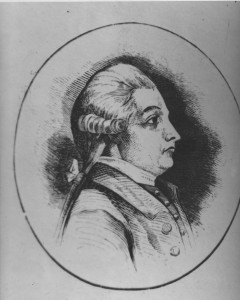
“This article used with the permission of MNopedia, operated by the Minnesota Historical Society, under a Creative Commons License. No changes have been made to the article’s content.”

